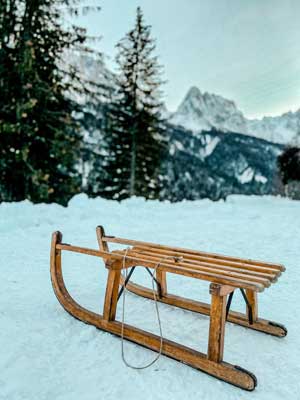
The use of sleds can be traced back thousands of years with evidence of their forms, across cultures. Ancient Egyptians were among the first to use sleds around 2000 BCE constructing them from planks or animal bones. These sleds served as a means of transportation over icy terrains.

In regions with very cold climates sleds played a role in ancient times as a mode of transportation. Arctic and North American indigenous peoples, like the Inuit heavily relied on dog sleds for hunting and getting around. These sleds were typically crafted from a combination of animal bones and wood.
Over time sled design became more sophisticated. The introduction of metal runners in the 20th century significantly enhanced sledding performance by allowing smoother gliding over snow and ice. This advancement paved the way for sleds like the wooden toboggan.
In the previous century, materials such as aluminum and plastic revolutionized sled construction. These lightweight materials made sledding faster and more maneuverable. The Flexible Flyer sled, which gained popularity after its introduction in 1889 stands out as one of the models, from that era.
Today, sleds are used for various purposes, including recreational activities such as sledding, skiing, and snowboarding. They also play a crucial role in competitive winter sports, such as bobsledding and luge. Modern sleds are made from a range of materials, including plastics, metals, and composites, and their designs continue to evolve to enhance performance and safety.
The history of the sled showcases its significance in human history, from its early practical use as a means of transportation to its current role as a source of winter fun and sport.

Leave a Reply